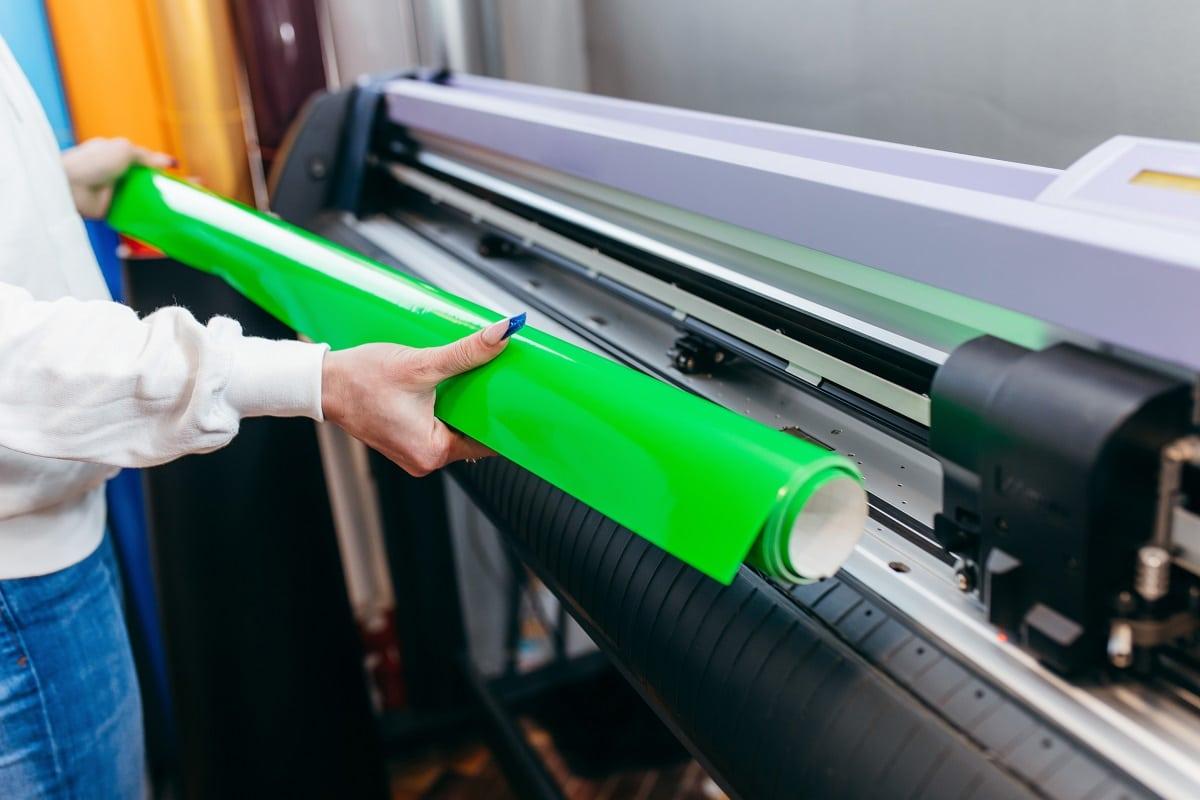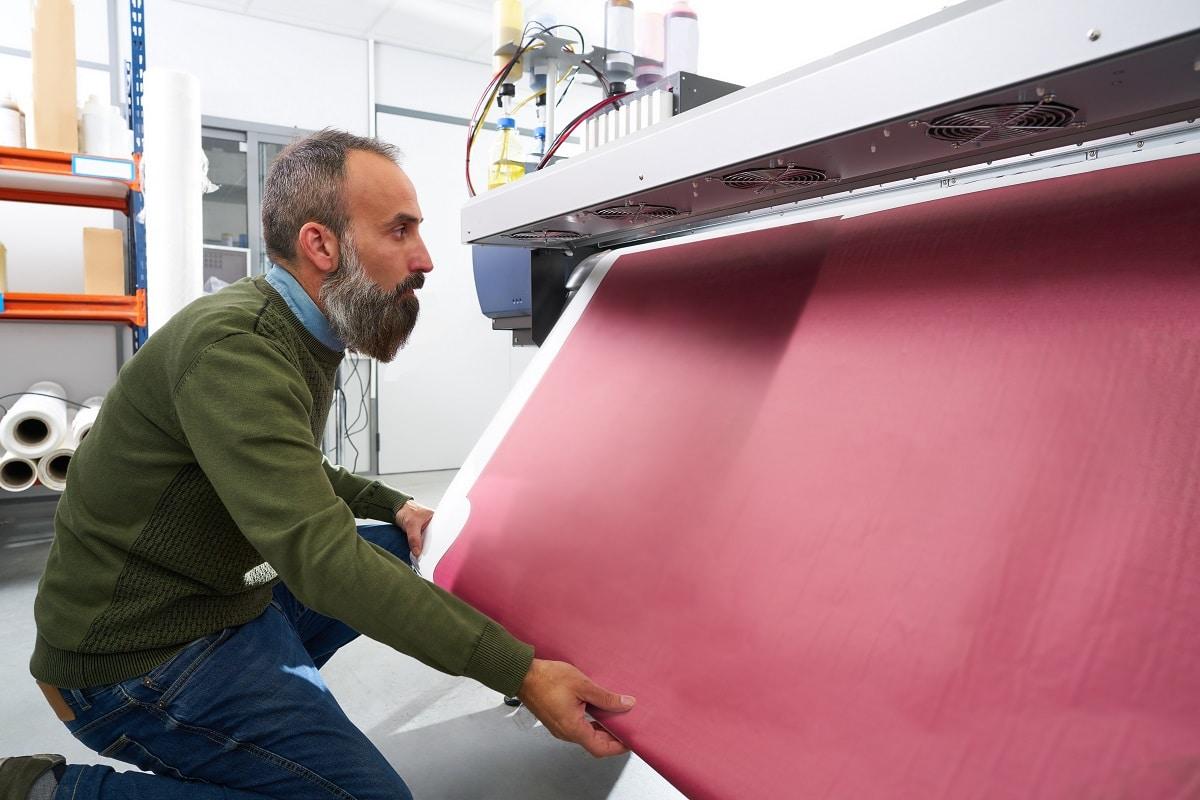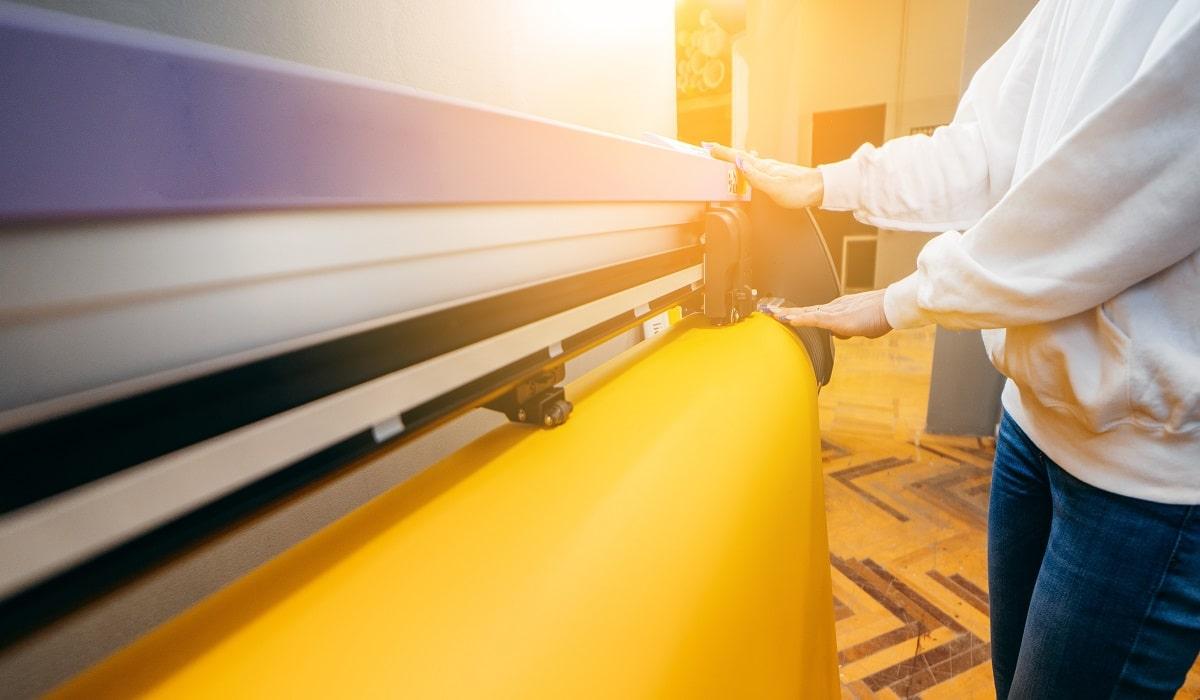Forget about the best 11×17 printers for architects and get to know about plotters first because nothing beats the high-resolution blueprints created by them.
Plotters are used by architects to print large vector drawings in areas where precision is required. So, if you have an ongoing architectural or engineering project, then a bit of knowledge about plotters and how they work can be beneficial.
But don’t worry if you have no idea what they are or how to use them. We’re here to help you out in that case with our detailed guide, which covers everything about plotters, starting from their history to their work.
So, without further ado, let’s get started!
What Are Plotters?

Plotters are hardware devices that are used to print vector graphics and can print on multiple surfaces ranging from plywood to plastic. They are similar to printers as they print line drawings on flat material. However, instead of toner, they make use of pencil, pen, or other writing material.
Plotters plot continuous lines to get the desired design, unlike dots. Other than that, they can act as a peripheral device, or they can be used independently too with their internal processor. You can use them to create high-quality and multiple copies of the same design or drawing without any loss of quality. Moreover, once they are fed with information about a design, no new commands are required to repeat the task.
Their use was widespread in Computer-Aided Design when modern printers like laser printers or inkjet printers weren’t introduced. As recent inventions are faster and more economical than the former, their usage has been limited to certain fields only. Nowadays, they’re used in architecture or engineering fields where great precision and measurements in design are required.
You can use 11×17 sheets on plotters to get your architectural blueprints, and the result would be perfect. On that note, if you don’t know what paper size is 11×17 or where to print 11×17 paper if you don’t have a plotter, then here’s the answer! 11×17 paper size is just as it says, an 11×17 inches paper, and you can use them on laser printers or even pen plotters.
On the topic of plotters and printers, you would already know that plotters aren’t that famous nowadays, unlike printers. As they’re costlier and bulkier than modern printers, they aren’t used as much now and are used to print hard copies of schematics or other similar applications.
History Of Plotters
Just like anything else, plotters have their fair share of history too. The once toddlers have today become mature adults with advancements in technology and grown up from their sluggish movements. Walking down the lane of history, you’d know that the first ever plotter was created in 1953 by Remington-Rand, which made technical drawings with the combination of UNIVAC computers.
Now pen plotters might seem archaic to many, but there was a time when they were the sole devices capable of providing high-resolution color copies. When computer memory was costly and processor power was regulated, numerous printer control languages like HP-GL and commands like “place pen on paper” were developed to effectively run pen plotters.
Today’s digital plotters covered a long journey and evolved from analog pen plotters. However, the earlier pen plotters, like the CalComp 565 XY plotter, were slow and too complex to handle. Their usage was cumbersome as users had to constantly worry about the pen running out of ink.
Even with Hewlett-Packard’s lightweight and compact plotters with the “grit wheel” mechanism introduced in the 1980s, the problem of slow speed still persisted. And let’s not forget that they were only capable of vector graphics and not raster graphics. They couldn’t duplicate images from computers which meant further innovation was required.
Therefore, these drawbacks of pen plotters led to advancements and the introduction of sophisticated printers like laser or inkjet, which made printing easy and fast. So, the once prominent plotters gradually lost their shine, and they’re now used for a handful of purposes only.
Different Types Of Plotters
There are various types of plotters, and each kind works in a different manner. Look at what these are below.
1. Drum Plotter
A drum plotter is a kind of pen plotter, and just as the name suggests, the paper is mounted on the drum here. In these plotters, paper and plotter pens move simultaneously to make large designs or graphics.
The paper slides back and forth in X-motion while plotter pens move from left to right in Y-motion. Now, as the paper is rolled on the drum, one can make lengthy images with the help of drum plotters.
Moreover, the width of the image to be produced depends on the width of the drum. Depending on the kind of drum plotter, you can use two or more than two pens. The CalComp 565 was the earliest drum plotter to be manufactured, which had only one pen. Also, it could handle graphics up to 11 inches of width only.
2. Flatbed Plotter
A flatbed plotter is also a type of pen plotter where paper is laid out on a flat surface while the pen moves in set coordinates over the same. Unlike drum plotters, where the paper moves too, flatbed plotters have paper set in a static position, and only the pen(s) moves from one location to another on the paper.
Any kind or color of pen can be used on flatbed plotters, and besides paper, these can be used on any type of surface ranging from cardboard to plastic. One can use these plotters numerous times to produce the same kind of data repeatedly without loss of quality which makes them quite valuable in making graphs or maps.
However, unlike drum plotters, where the size of the design depends on the drum’s width, here it depends on the size of the flatbed. The bigger the flatbed, the bigger the data you’re willing to design.
CalComp Model 738 was the earliest flatbed plotter manufactured in the 1970s, where magnetic tapes were used to input data.
3. Cutting Plotter
A Cutting Plotter is pretty self-explanatory, and you can guess what it does, i.e., it cuts the surface instead of drawing on top of it. It makes use of cutters, unlike plotter pens which are used in other plotters. Cutting knives are fixed into a bar instead of a pen which is later used to cut materials like paper, mylar film, or vinyl film placed on top of the surface.
These plotters are connected to computers that feed commands regarding cutting instructions like how far the knife should press on the material or the kind of shape to be cut. These cutting dimensions are received by the plotter, who later executes them with utmost perfection.
Nowadays, cutting plotters have become extremely popular among art enthusiasts for creating paper crafts.
4. Electrostatic Plotter
Electrostatic plotters, just like the name says, use electrostatic charge instead of plotter pens to plot designs on paper. The paper is charged with high voltage on which the toner ink melts to create designs or any kind of drawing.
Unlike other plotters, electrostatic plotters are quite fast and cost-effective. However, they don’t produce high-quality drawings like other pen plotters.
These plotters are mostly used for CAE or Computer-Aided Engineering and produce raster images with dry toner or liquid toner. The dry toner model works in the same manner as xerography in photocopiers. On the other hand, the liquid toner model uses positively charged toner, which gets attracted to the negatively charged paper to create drawings.
5. Inkjet Plotter
Inkjet plotters are one of the most popular plotters today, and they use ink droplets to produce high-quality graphics on paper or whatever surface that’s being painted. The ink droplets on the surface are either applied using heat in the case of thermal inkjet plotters or via charged crystals in piezoelectric plotters.
These plotters are especially used to print large billboards and banners by advertising agencies.
What Are Plotters Used For?

Plotters produce output in the form of vector graphics drawn by mechanical pens, ink, or other instruments. These tools, which are attached to the plotter, draw complex line art and work in combination with imaging software (Computer-Aided Design) that is installed on computers.
With the help of this imaging software, one can plan the dimensions and coordinates of the diagram to be painted on any surface where the drawing has to be made. These dimensions and coordinates are later fed as commands by computers to the plotters.
Over time, the usage of plotters has diminished, and only a handful of fields use them as they’re quite expensive in comparison to standard printers. However, their accuracy and high-quality output are unmatchable, and that’s why industries like engineering or architecture still use them for creating blueprints, graphs, large maps, etc.
The most common applications of plotters today are:
-
- To draw line art
- To draw big graphs
- To draw maps
- To draw charts
- For Computer-Aided Designs
- For textile printing
- To print banners and billboards
- To draw architectural blueprints and prototypes
- To draw geographical layouts
- For building plans, etc.
Advantages Of Using Plotters
There are some advantages that come with using plotters that aren’t met with regular printers. These advantages are listed below.
- Plotters can create numerous identical diagrams without loss of quality.
- They can print large sheets of high-resolution output.
- Besides paper, plotters can print on other surfaces, for example – plastic, cardboard, plywood, sheet steel, etc.
Disadvantages Of Using Plotters
Apart from advantages, there are some drawbacks associated with plotters too, which are listed below.
- Plotters are bulkier and costlier than regular printers.
- Old plotters like the pen plotters are pretty slow in comparison to modern printers.
How Do Plotters Work?
Plotters work in conjunction with imaging software which feeds commands regarding a design that needs to be plotted on the surface. This surface can be anything like paper, plastic, cardboard, etc. Once the plotter perceives the instructions, it starts to draw mechanically, either with a pen or a cutter on that surface.
If it’s your first time using a plotter, then it’s okay to be confused about how it works or how to get started with a plotter. So, to start working with a plotter, you should first set the right schematics of the image or diagram on the imaging software of the computer. All you have to do is enter the coordinates where the image will be displayed on the paper.
Once you’re done doing that, the computer will send the complete instructions of the same to your plotter, which will interpret these instructions and start working on the project.
Now, if you own a drum plotter, then the image will be drawn on the moving paper and pen. Here, the plotter pen moves on top of the paper, which rotates on the drum in Y-motion. However, if you own a flatbed plotter, then the paper will stay fixed on the surface while pens move with the help of robotic arms to draw the diagram.
How Are Plotters Different From Printers?
People are prone to confuse plotters with printers. However, you should know that both output devices are different. If you don’t know how, then remember that, unlike printers which are raster scan devices, plotters are vector scans.
This means that contrary to raster scans like printers, plotters directly navigate to coordinates on the surface that need to be drawn without scanning the whole surface area. By doing that, it leaves out the parts which don’t need to be painted.
Moreover, plotters draw continuous lines and have mechanical movements, which makes them quite slow in comparison to printers. Their setup is bulkier and heavier than regular printers, making them unpopular among general users who prefer lightweight and compact printers that can fit easily.
What Are Plotters Used For Frequently Asked Questions ?
Got some doubts regarding plotters? Here we have answered some of the common doubts about plotters.
What is the function of a plotter?
Plotters can read graphic vector files easily, and they follow computer commands to draw or cut the desired design on paper, plastic, cardboard, sheet steel, etc. Earlier, they were used to draw CAD, but their usage has fairly decreased with the introduction of economical printers.
Their slow speed makes them unpopular. However, art enthusiasts, engineers, and architects still use them to create high-quality designs, blueprints, graphs, etc.
What are the uses of plotters?
Plotters draw line art and reproduce vector graphics drawn on computers which instruct them to do so. They are commonly used in drawing charts, graphs, maps, blueprints, billboards, and textile printing.
What are the different types of pen plotters?
Flatbed plotters and drum plotters are two types of pen plotters. They use plotter pens for drawing, unlike cutting plotters which have knives and follow the instructions laid down by the computer. Most modern pen plotters today are used by graphic artists to showcase their artistic talent.

What Are Plotters Used For Final Remarks
This marks the end of our detailed guide on plotters and what they’re used for. By now, you should already know that plotters are computer output devices that are used to draw diagrams on large sheets of paper.
Architects and engineers use them to draw detailed blueprints or graphs as these offer high-resolution output. However, with the introduction of printers, their use has greatly diminished. Still, no one can deny their importance in creating diagrams where high precision is required.


